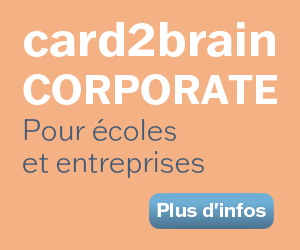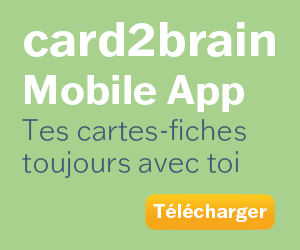TEAAFL
Karteikarten für die Klausur “Teaching English as a Foreign Language”. Kurs von Prof. Merse aus dem WS 22/23
Karteikarten für die Klausur “Teaching English as a Foreign Language”. Kurs von Prof. Merse aus dem WS 22/23
Fichier Détails
| Cartes-fiches | 158 |
|---|---|
| Utilisateurs | 32 |
| Langue | English |
| Catégorie | Anglais |
| Niveau | Université |
| Crée / Actualisé | 19.01.2023 / 29.01.2025 |
| Lien de web |
https://card2brain.ch/cards/20230119_teaafl?max=40&offset=80
|
| Intégrer |
<iframe src="https://card2brain.ch/box/20230119_teaafl/embed" width="780" height="150" scrolling="no" frameborder="0"></iframe>
|
What are the productive competences? (Oral and written)
- Speaking
- Writing
- additionally: mediatio
What does speaking in EFL involve?
- oral competence involving cognitive, linguistic and motor processes
- stringing words together into meaningful units: grammar, words, pronunciation – repeated practice – becoming automatic
- knowledge of sociocultural norms
- discourse: language use in a specific situation (including its ‘rules’) + larger units of spoken language beyond the sentence
- coherence: stringing together the meaning of a spoken text so that it makes sense and has purpose – connecting ideascohesion: stringing together the ‘surface’ of a spoken text linguistically, e.g. with cohesion words and lexical chunks – connecting language
What is conceptualisation in the process-model of speaking based on Levelt?
Planning the message content and drawing on various knowledge sources while doing so (background, topic, speech situation, discourse patterns
What is Formulation in the process-model of speaking based on Levelt?
Finding the words and phrases to express the meanings, sequencing them, and preparing the sound patterns of the words and phrases to be used.
What is Articulation in the process-model of speaking based on Levelt?
Controlling the articulately organs (such as lips, tongue, teeth).
What is self-monitoring in the process-model of speaking based on Levelt?
Identifying and self-correcting mistakes during oral production.
Name the 3 key features of learners' speech.
- Fluency
- Accuracy
- Complexity
Define the key feature (of learners' speech) 'fluency' and name what it focuses on.
Speech where message is communicated coherently with few pauses and hesitations, causing minimal comprehension difficulties
Focus: meaning
Define the key feature (of learners' speech) 'accuracy' and name what it focuses on.
Speech where the message is communicated using correct grammar, lexis and pronunciation.
Focus: form
Define the key feature (of learners' speech) 'complexity' and name what it focuses on.
Speech where the message is communicated precisely and appropriately to the context and the partners in communication, using more advanced grammatical forms and differentiated lexis
Focus: meaning and form
What can teachers focus on when dealing with learners' language? (Fluency-based)
- Focus on meaning
- negotiate meaning
- gap of information/meaning existing between speakers 'in the real world'
What can teachers focus on when dealing with learners' language? (Accuracy-based)
- Focus on form
- focus on one selected aspect of L2 (e.g. third person '-s'
- high control over student input
What is the process-based approach (writing in the classroom)?
- Focus on the process of writing mainly from a cognitive point of view
- Question: How do writers create good texts?
- Focuses on the steps of writing towards the finished text
What is the Genre/text-based approach (writing in the classroom)?
- Focus on the product of writing by examining e.g. the formal surface elements and discourse structure of sample texts
- Question: What makes a good text?
- focuses on producing a certain text type, often standardized texts
Mediation skills:
To mediate successfully, a learner should have: (name 5 skills)
- Language skills, e.g. receptive and productive; specific skills such as paraphrasing, explaining in simpler language...)
- strategic skills, e.g. selecting relevant information
- cultural skills: e.g. explaining specific cultural aspects and assuming what the other person does (not) know; knowing cultural differences
- social interactive skills: e.g. anticipating, checking comprehension
- discourse skills: stringing together a successful interaction for
mediation (first...second...third...the most important thing is...)
→ Mediation is not the same as translation!
What is a curriculum?
- Lehrplan
- issued by the federal states through the Ministries of Education (Ministerium für Schule und Bildung des Landes NRW)
- Curriculum of NRW = Kernlehrplan
- output orientation defines competences that learners are expected to attain as the result of EFL education
- not designed on the basis of input orientation that specifies input in terms of topics and themes
What is the CEFR?
- 'Common European Framework of References for Languages' published by the Council of Europe in 2001
- embedded in a European priority to boost foreign language education for an increasingly interconnected Europe
- makes foreign language learning comparable through describing foreign language proficiency in terms of progression scales: A1-A2-B1-B2-C1-C2
- contains 'can do' descriptors (-> also used in the Kernlehrplan)
can say a short and rehearsed statement, e.g. to say your name
can give a short and rehearsed mini-presentation on a very familiar topic
can give a prepared, very straightforward presentation on a familiar topic within a field that is well-known to the learner
can give a prepared, clear presentation with more complexity
can give a clear, longer, well-structured presentation on a complex topic that is not from within the learner‘s field of knowledge
can give a complex, elaborate and well-articulated presentation on a very complex topic, with confidence in front of a demanding audience
What is Culture (with a capital 'C')?
- Elitist and normative understanding of culture
- the works of 'high' art, music, literature
What is culture (with a small 'c')?
- Daily life (culture as 'signifying practices')
- popular culture and mass media
What does 'culture as a set of shared meanings' mean?
The term 'culture can be looked at from different perspectives.
For example: the term describes an elitist and normative understanding of culture, such as the works of 'high' art, music and literature. For this definition, the term Culture is written with a capital 'C'.
The other meaning of culture describes the daily life and 'signifying practices' as well as pop-culture and mass media. For this definition, the term culture is written with a small 'c'.
What is mental culture?
- Codes:
- ideas, values, conventions
What is social culture?
- Code users:
- individuals, society, social groups, institutions
What is material culture?
- Texts:
- texts and other artifacts














